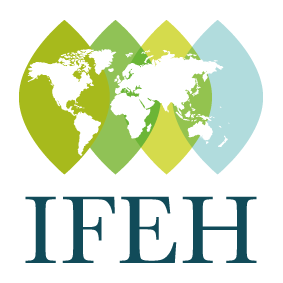SOUND PRESSURE LEVELS IN A POPULATION NEAR A WIND FARM: CASE STUDY OF COENTRAL GRANDE (PORTUGAL)
Keywords:
Wind turbines, Noise, Infrasound and Low Frequency NoiseAbstract
Background: Concerns about environmental issues, where degradation is accentuated by the use of fossil fuels, have motivated interests in renewable energies, especially wind power. However, wind energy bring the problems related with the noise produced by wind turbines and the consequent negative impact in the human health.
Aim: The aim of this study is to analyse and characterise infrasound’s and low frequency noise produced by the wind farm of Coentral-Safra (Portugal) and understand the influence on the population of Coentral Grande. Humidity, day time, measuring location (with or without forest), air velocity and propagation of noise were also analysed.
Methods: The study was carried out on Coentral Grande. A matrix with 81 sampling points was elaborated, in order to better understand the village area. Cesva SC420 Sound Level Meter was used to for the 137 measurements. This equipment was at 1,5m from the ground and 2m from infrastructures. The measurements included frequencies from 2Hz to 20000Hz (2Hz/line), in dB and in dB(A). Types of noise were categorised in: Infrasound [2-20 Hz/dB], Low Frequency Noise [20-500 Hz/dB], Infrasound and Low Frequency Noise [2-500 Hz/dB] and Environmental Noise [dB(A)]. Temperature, relative humidity and air velocity was defined (with TSI 8554 multiparameter meter) in 15 meters from the wind turbine further to the northwest point.
Results: The production of Infrasound and IRBF is influenced by the air velocity. It was also found that, at night, there is an increase of infrasound and low frequency noise levels, resulting from the variation in air velocity and relative humidity. In areas without forest the sound pressure levels were also higher.
Conclusion(s): Considering that exposure to high sound pressure levels of infrasound’s and low frequency noise are a public health problem, is crucial to develop strategies to minimise the impact of these disease agents.
Planning the land use, environment and health must be highlight in order to reduce the consequences of these impacts.
Presenter e-mail: joaoalmeida@estescoimbra.pt


